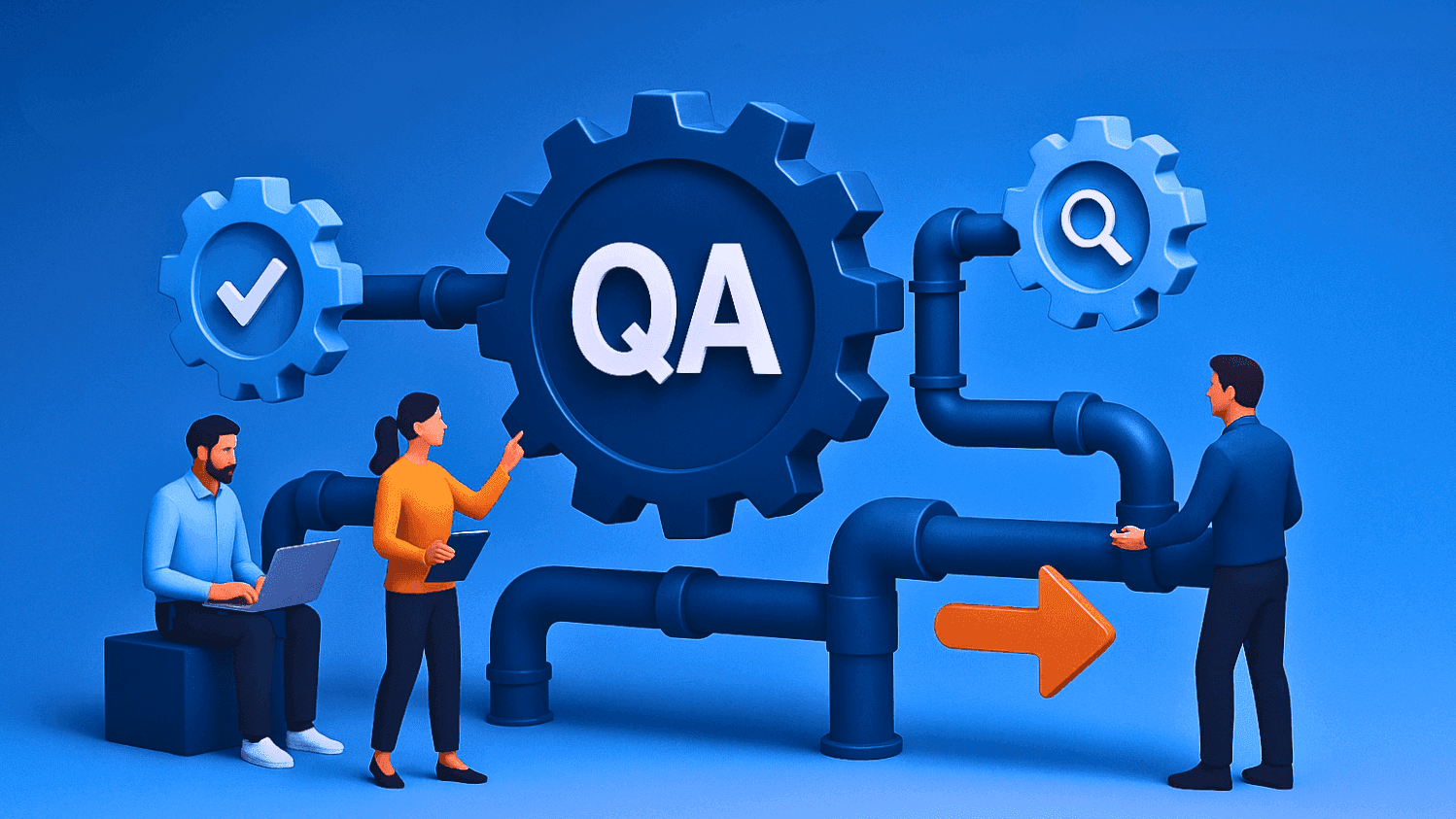
Blogs
How Quality Assurance (QA) Drives Continuous Quality in Agile and DevOps Pipelines

How Quality Assurance (QA) Drives Continuous Quality in Agile and DevOps Pipelines
The pressure to deliver faster, better, and more reliable software is higher than ever. With Agile and DevOps now at the heart of most organizations, releases are quicker, continuous, and heavily automated.
But the evidence from years of on-the-ground experience shows that speed without quality is a ticking time bomb. No matter how fast your CI/CD pipeline is, if quality isn’t built in from the start, cost implications will surface later in production issues, customer dissatisfaction, or expensive rework.
That’s why QA today isn’t simply a final checkpoint it’s a continuous, integrated role across the development lifecycle.
“Develop first, test later” doesn’t work anymore. QA has evolved from being a gatekeeper to becoming a true partner in driving quality at speed. In fact, in Agile environments, QA is embedded from day one through:
Automation alone doesn’t guarantee quality. QA is about making sure fast-tracking deployments don’t translate to buggy deployments.
This includes:
The future of QA is intelligent, adaptive, and proactive. AI-powered testing tools and predictive analytics help forecast potential defect-prone areas, optimize test coverage, and automate repetitive tasks. Self-healing automation allows test scripts to automatically adapt to changes in UI or workflows, significantly reducing maintenance efforts and improving reliability.
Quality today goes beyond functionality—it’s about delivering seamless user experiences.
Towards this, QA teams leverage usability testing, session analytics, and direct user feedback to improve UX continuously. Importantly, by aligning QA efforts with user expectations, teams can ensure that software not only works but also delights.
With devices, platforms, and environments constantly expanding, scalability is critical.
Cloud-based testing environments provide the flexibility to run tests across multiple browsers, devices, and operating systems without requiring heavy infrastructure investments. This ensures broader coverage, faster execution, and better collaboration across distributed teams.
“You can’t improve what you don’t measure” - The popular quote by Peter Drucker is applicable here. Continuous quality relies on feedback at every stage.
Therefore, key metrics like defect density, automation coverage, build success rates, and Mean Time to Detect (MTTD) help teams identify risks and strengthen release confidence. Feedback loops from each sprint and release feed directly into process improvements, making the pipeline more resilient over time.
Challenges Solved by QA in Agile and DevOps Environments
Even with Agile ceremonies and DevOps automation, challenges remain — scope creep, unstable environments, lack of test data, or relentless time pressure. QA addresses these by:
The Strategic Future of QA in Software Development
QA is no longer about just finding bugs. Today, it’s about enabling continuous quality at speed.
Businesses and operations are set to change further, as AI, predictive analytics, and self-healing automation continue to evolve. Cloud-based testing will bring scalability and flexibility. Security and UX will become inseparable from quality.
Ultimately, QA’s role is becoming more strategic and user-focused to ensure that software is not only fast and reliable but also secure, resilient, and delightful to use.